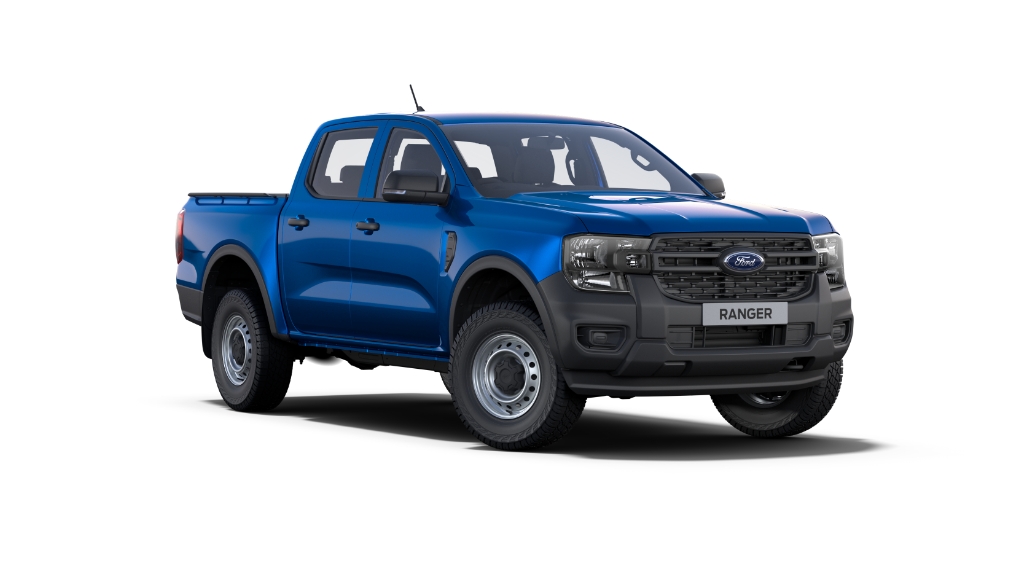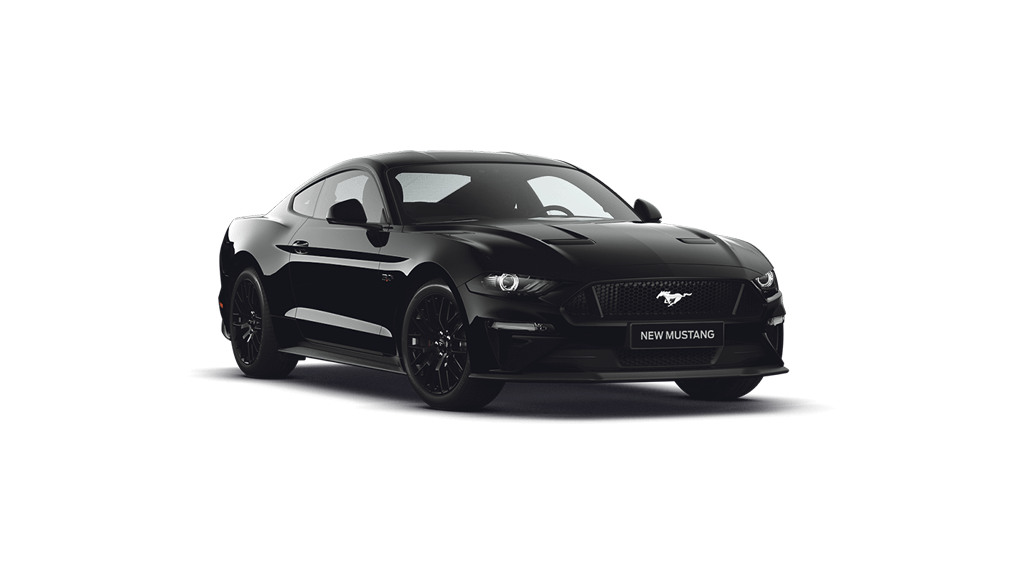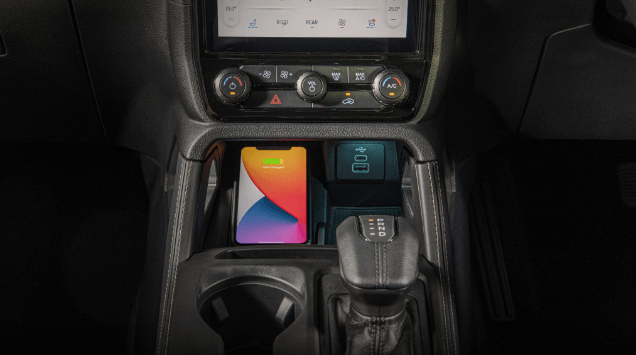Whats New
On the outside
Everest’s 50mm wider track and longer wheelbase enabled designers to create a more progressive, muscular appearance. Ford’s global design DNA is reflected in the C-clamp head lamps and strong horizontal upper grille bar. It all contributes to create a strong and modern look that communicates Next-Gen Everest’s capability.
The LED headlights with C-clamp LED daytime running lights reinforce Next-Gen Everest’s signature design DNA and provide high performing visibility on the road.
A new 3.0L turbodiesel V6 headlines the lineup, but Next-Gen Everest gives customers an engine to suit their lifestyles, with a 2.0L Bi-Turbo engine also available. Both engines feature Ford’s efficient 10-speed SelectShift
automatic.
The new integrated or stand-off roof rails are more than just a design detail; they’re engineered for adventure. The Everest’s rooftop can now support static loads of up to 350kg and dynamic loads of up to 100kg depending on the variant, providing increased versatility that enables it to carry bikes, canoes, cargo pod or roof-top tent. A universal mounting system allows customers to equip their vehicle with a range of accessories
Keep going even after the sun sets with zone lighting that allows you to control all or individual exterior lights (zones) on Everest either through the SYNC® 4A screen4 or from the FordPass™ app on your smartphone.
There are two 4×4 systems: A two-speed electronic shi -on-the-fly transfer case, also known as a ‘part-time’ 4×4 system; and an advanced, permanent four-wheel drive system that uses an electronically controlled on-demand two-speed electromechanical transfer case (EMTC) with selectable drive modes
A maximum braked towing capacity of 3500kg is just part of the towing story with Next-Gen Everest which boasts an integrated trailer brake controller, trailer light check function, trailer connection checklist
and BLIS with trailer coverage9, as well as a new Tow/Haul drive mode to
improve gearshift response when towing or carrying heavy loads.
With Active Park Assist 2.0, Next-Gen Everest can help the driver fit safely in tights spaces at the press of a button. The system takes care of the steering, shifting, acceleration and braking to navigate into parallel or perpendicular parking spaces with ease. It will also drive itself out of a parallel parking spot when prompted.
On the INSIDE
Everest’s new interior boasts a sense of spaciousness amplified by the full-width coast-to-coast instrument panel and centre console with integrated wireless charging, cupholders, new e-Shifter and electric parking brake. Heated and ventilated 10-way power adjustable memory function seats are available for the driver and 8-way for the passenger, while heated seats are also available for the second row, depending on the variant.
Stay informed on and off the road with a large 8 or12.4-inch digital instrument cluster. It offers a number of view types and responds to the selected drive mode, displaying useful vehicle information, as well as turn-by-turn navigation.
The new e-Shifter and electric park brake allows for improved centre-console storage and wireless smartphone charging, and a greater
sense of space in the front of the cabin.
A dedicated screen for all off-road features, enhanced with a front
camera view with predictive overlay guide-lines, driveline and diff lock
indication, steering angle and vehicle pitch complement the expert and
inform the enthusiast.
Everest boasts a fully digital cabin, with high-resolution 12-inch portrait-oriented centre touchscreen boasting Ford’s new-generation
SYNC® 4A connectivity and entertainment system, which offers both
Apple and Android wireless smartphone connectivity. Additionally, there’s an embedded factory-fitted modem, allowing customers to connect to Everest when linked with the FordPass™ App. FordPass enhances the ownership experience with features like remote start, vehicle status check and remote lock and unlock functions via your
mobile device.
Helping Next-Gen Everest handle anything from smooth roads to mud and sand and everything in between are on- and off-road oriented selectable drive modes: Normal, Eco, Tow/Haul and Slippery are intended for on-road use, while Mud/Ruts and Sand modes are for off-road use.
There’s more elbow, leg and shoulder room for those in the front and the back, while accessing the third-row seats now is much easier thanks to second-row seats that slide further forward than before. And for models
with a moonroof, improved packaging means there’s more headroom than ever before.
Both the second and third row seats have been designed to fold flat, to
allow for long loads to be carried safely. Whether the second- and
third-row are folded down or in use, there’s now more usable storage
space in the back of the Next-Gen Everest.




















